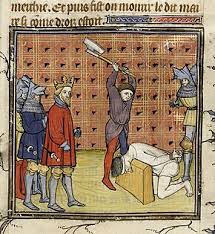Stamp: The Nativity from the Breviarium of Philip the Good (1460-14 (Belgium 2015)
The Nativity from the Breviarium of Philip the Good (1460-14 (Belgium 2015)
26 October (Belgium ) within release Magnificent miniatures goes into circulation Stamp The Nativity from the Breviarium of Philip the Good (1460-14 face value 3 Europe Unit
| Stamp The Nativity from the Breviarium of Philip the Good (1460-14 in catalogues | |
|---|---|
| Colnect codes: | Col:BE 2015-118 |
Stamp is horizontal format.
Nominal value at the date of Issue: 3,3 Euro.Also in the issue Magnificent miniatures:
- Souvenir Sheet - Sheet "Magnificent miniatures" face value 2*3 Europe;
- Stamp - The Nativity from the Urbino Bible (1478) face value 3 Europe;
- Stamp - The Nativity from the Breviarium of Philip the Good (1460-14 face value 3 Europe;
Stamp The Nativity from the Breviarium of Philip the Good (1460-14 it reflects the thematic directions:
Christmas or Christmas Day (Old English: Crīstesmæsse, meaning "Christ's Mass") is an annual festival commemorating the birth of Jesus Christ, observed most commonly on December 25 as a religious and cultural celebration among billions of people around the world. A feast central to the Christian liturgical year, it is prepared for by the season of Advent or the Nativity Fast and initiates the season of Christmastide, which historically in the West lasts twelve days and culminates on Twelfth Night; in some traditions, Christmastide includes an Octave. The traditional Christmas narrative, the Nativity of Jesus, delineated in the New Testament says that Jesus was born in Bethlehem, in accordance with messianic prophecies; when Joseph and Mary arrived in the city, the inn had no room and so they were offered a stable where the Christ Child was soon born, with angels proclaiming this news to shepherds who then disseminated the message furthermore. Christmas Day is a public holiday in many of the world's nations, is celebrated religiously by the vast majority of Christians, as well as culturally by a number of non-Christian people, and is an integral part of the holiday season, while some Christian groups reject the celebration. In several countries, celebrating Christmas Eve on December 24 has the main focus rather than December 25, with gift-giving and sharing a traditional meal with the family.
In the history of Europe, the Middle Ages or medieval period (also spelt mediaeval or mediæval) lasted approximately from 500 AD to 1500, although some prefer other start and end dates. The Middle Ages is the second of the three traditional divisions of Western history: antiquity, medieval, and modern. Major developments include the predominance of agriculture in the economy, the exploitation of the peasantry, slow interregional communication, the importance of personal relationships in power structures, and the weakness of state administration. The period is sometimes subdivided into the Early, High, and Late Middle Ages, and the early medieval period is alternatively referred to as the Dark Ages.
Art is a diverse range of human activities in creating visual, auditory or performing artifacts (artworks), expressing the author's imaginative or technical skill, intended to be appreciated for their beauty or emotional power. In their most general form these activities include the production of works of art, the criticism of art, the study of the history of art, and the aesthetic dissemination of art. The oldest documented forms of art are visual arts, which include creation of images or objects in fields including painting, sculpture, printmaking, photography, and other visual media. Architecture is often included as one of the visual arts; however, like the decorative arts, or advertising, it involves the creation of objects where the practical considerations of use are essential—in a way that they usually are not in a painting, for example. Music, theatre, film, dance, and other performing arts, as well as literature and other media such as interactive media, are included in a broader definition of art or the arts. Until the 17th century, art referred to any skill or mastery and was not differentiated from crafts or sciences. In modern usage after the 17th century, where aesthetic considerations are paramount, the fine arts are separated and distinguished from acquired skills in general, such as the decorative or applied arts.



